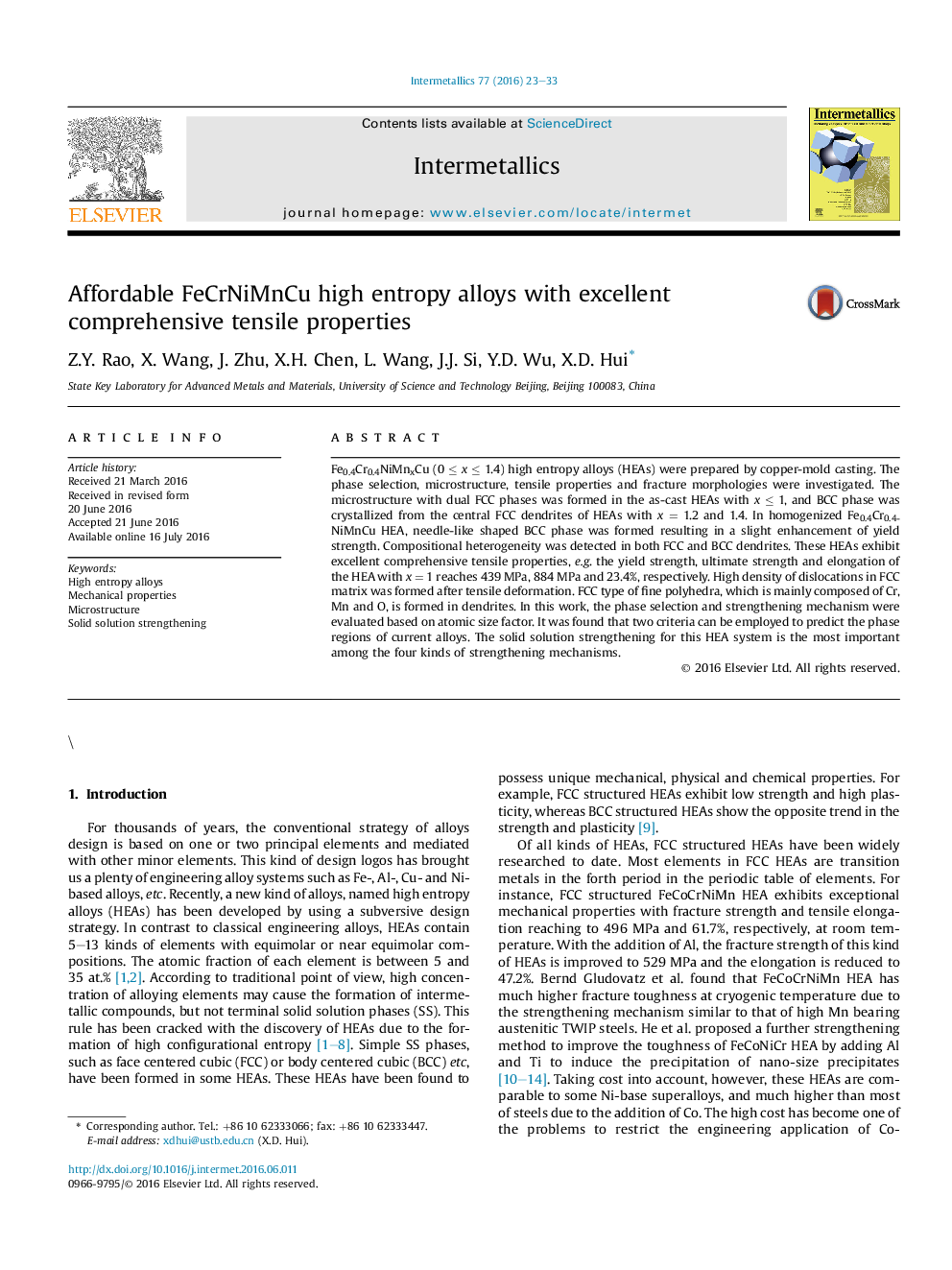| Article ID | Journal | Published Year | Pages | File Type |
|---|---|---|---|---|
| 1599621 | Intermetallics | 2016 | 11 Pages |
•FeCrNiMnCu HEAs with excellent comprehensive tensile properties have been obtained.•Dual FCC phases were formed in Fe0.4Cr0.4NiMnxCu HEAs with x ≤ 1.•γ-δ and α-δ correlations can be employed to accurately predict the phase regions.•SS strengthening plays a critical role for the mechanical properties.
Fe0.4Cr0.4NiMnxCu (0 ≤ x ≤ 1.4) high entropy alloys (HEAs) were prepared by copper-mold casting. The phase selection, microstructure, tensile properties and fracture morphologies were investigated. The microstructure with dual FCC phases was formed in the as-cast HEAs with x ≤ 1, and BCC phase was crystallized from the central FCC dendrites of HEAs with x = 1.2 and 1.4. In homogenized Fe0.4Cr0.4NiMnCu HEA, needle-like shaped BCC phase was formed resulting in a slight enhancement of yield strength. Compositional heterogeneity was detected in both FCC and BCC dendrites. These HEAs exhibit excellent comprehensive tensile properties, e.g. the yield strength, ultimate strength and elongation of the HEA with x = 1 reaches 439 MPa, 884 MPa and 23.4%, respectively. High density of dislocations in FCC matrix was formed after tensile deformation. FCC type of fine polyhedra, which is mainly composed of Cr, Mn and O, is formed in dendrites. In this work, the phase selection and strengthening mechanism were evaluated based on atomic size factor. It was found that two criteria can be employed to predict the phase regions of current alloys. The solid solution strengthening for this HEA system is the most important among the four kinds of strengthening mechanisms.
